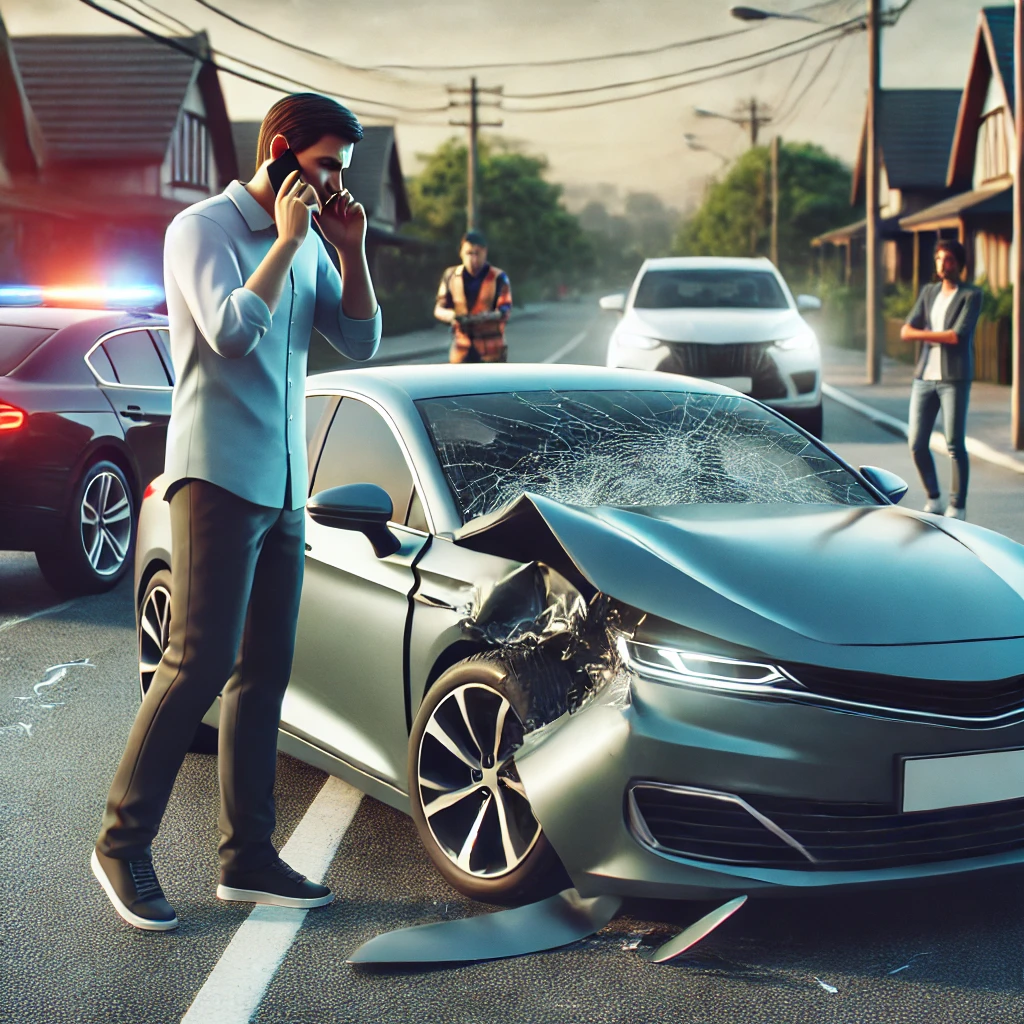
Could You Afford to Replace Your Car After an Accident?
Car accidents happen when you least expect them. One moment, you’re driving to work or picking up groceries; the next, you’re dealing with vehicle damage, medical bills, and insurance paperwork. If you don’t have the right coverage, an accident could leave you with thousands of dollars in expenses—and no way to recover.
Personal auto insurance isn’t just a legal requirement in most states; it’s a financial safety net that protects you, your passengers, and your assets in the event of an accident, theft, or unexpected damage.
What Is Personal Auto Insurance?
Personal auto insurance is a policy that protects you financially in case of a car accident, damage, theft, or injury while driving. It helps cover repair costs, medical bills, and liability claims if you’re responsible for an accident.
A well-structured policy ensures you’re not left paying out-of-pocket for damages that could otherwise put a strain on your finances.
What Does Personal Auto Insurance Cover?
A standard auto insurance policy includes several key coverages to protect you in different scenarios:
- Liability Coverage – Covers costs if you’re responsible for injuries or property damage to others.
- Collision Coverage – Pays for damage to your car if you’re in an accident, regardless of fault.
- Comprehensive Coverage – Covers non-collision incidents like theft, vandalism, or weather-related damage.
- Uninsured/Underinsured Motorist Coverage – Protects you if you’re hit by a driver without enough insurance.
- Medical Payments (MedPay) or Personal Injury Protection (PIP) – Helps cover medical expenses for you and your passengers after an accident.
Having the right mix of these coverages ensures you’re protected against unexpected costs that could disrupt your financial stability.
How Much Auto Insurance Do You Need?
The right level of coverage depends on factors like your state’s legal requirements, the value of your vehicle, and your financial situation. Here’s what to consider:
1. State Minimum vs. Adequate Limits
Most states require liability insurance, but minimum coverage often isn’t enough to protect you fully. Upgrading to comprehensive and collision insurance provides better financial security.
2. Loan or Lease Requirements
If you’re financing or leasing your car, your lender may require full coverage, including collision and comprehensive insurance.
3. Your Vehicle’s Value
If your car is older and has a low market value, you may not need full coverage. But if it’s newer or expensive to repair, comprehensive coverage is a smart investment.
4. Your Financial Cushion
Can you afford to replace your car if it’s totaled? If not, opting for broader coverage is a wise decision.
Why Skimping on Insurance Can Cost You More
Choosing the cheapest policy may save money upfront, but it could cost you thousands if you’re in an accident. Here’s what’s at risk:
1. Paying Out-of-Pocket for Repairs
If you only have liability coverage and your car is damaged in an accident, you’ll have to pay for repairs yourself.
2. Expensive Medical Bills
Without medical coverage, you could face high hospital costs if you’re injured in a crash.
3. Lawsuits & Legal Fees
If you cause an accident and don’t have enough liability coverage, you could be sued for damages beyond what your insurance covers.
4. Being Stuck Without a Car
Without comprehensive coverage, a stolen or totaled car means you’re left without transportation—or facing high replacement costs.
How to Get the Best Auto Insurance for Your Needs
Choosing the right policy doesn’t have to be complicated. Here’s how to find the best coverage for you:
1. Work with an independent agent
Insurance rates vary by provider, so it’s essential to shop around. Hamsher Insurance is an independent agency that shops many different carriers so you don’t have to!
Get a free auto insurance quote here to see your options.
2. Understand Discounts
Many insurers offer discounts for safe driving, bundling policies, or having a clean record. Ask about potential savings when comparing plans.
3. Adjust Deductibles & Limits
A higher deductible lowers your monthly premium, but make sure you can afford it in case of an accident. Balancing coverage limits ensures you’re protected without overpaying.
4. Work With an Expert
Not sure which coverage is best? Talk to one of our insurance advisors to get personalized recommendations based on your budget and needs.
Get the Right Auto Insurance Today
The right auto insurance policy provides peace of mind every time you hit the road. Don’t wait until an accident happens to find out you’re underinsured.
Request a free quote today and ensure you’re covered for the unexpected.
Frequently Asked Questions
1. What’s the difference between full coverage and liability insurance?
Liability insurance covers damage and injuries you cause to others, while full coverage includes liability, collision, and comprehensive protection for your vehicle.
2. How much does personal auto insurance cost?
Rates vary based on factors like your driving history, vehicle type, location, and coverage levels. The average cost can range from a few hundred to over a thousand dollars per year.
3. Does auto insurance cover rental cars?
Many policies extend coverage to rental vehicles, but it’s best to check with your insurer. You may also have coverage through your credit card company.
4. What happens if I let someone else drive my car?
In most cases, your insurance follows the car—not the driver—meaning your policy covers accidents, even if someone else is behind the wheel.
5. Where can I learn more about auto insurance options?
Explore our blog for more insights on protecting yourself and your vehicle.
